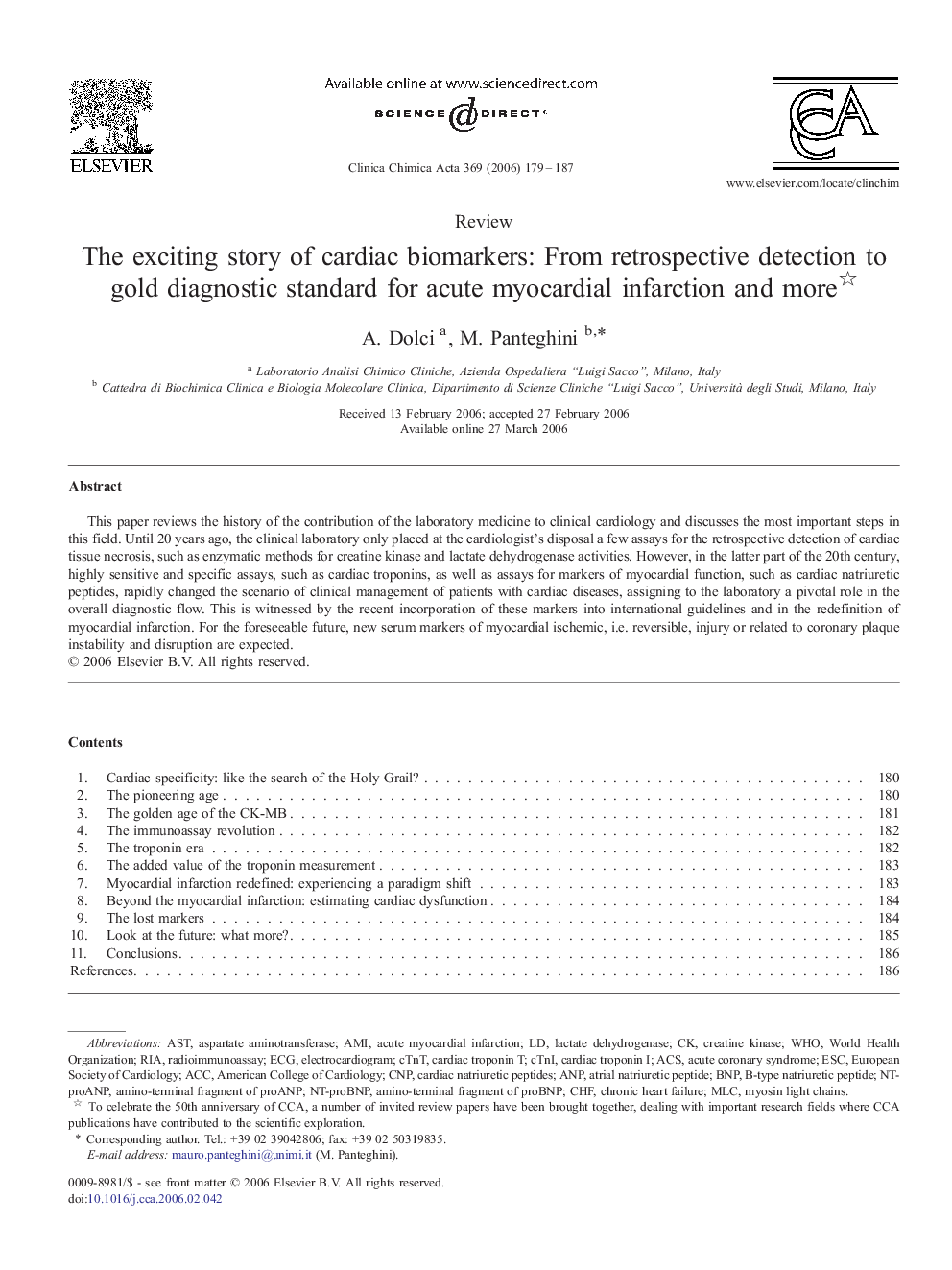| Article ID | Journal | Published Year | Pages | File Type |
|---|---|---|---|---|
| 1968063 | Clinica Chimica Acta | 2006 | 9 Pages |
This paper reviews the history of the contribution of the laboratory medicine to clinical cardiology and discusses the most important steps in this field. Until 20 years ago, the clinical laboratory only placed at the cardiologist's disposal a few assays for the retrospective detection of cardiac tissue necrosis, such as enzymatic methods for creatine kinase and lactate dehydrogenase activities. However, in the latter part of the 20th century, highly sensitive and specific assays, such as cardiac troponins, as well as assays for markers of myocardial function, such as cardiac natriuretic peptides, rapidly changed the scenario of clinical management of patients with cardiac diseases, assigning to the laboratory a pivotal role in the overall diagnostic flow. This is witnessed by the recent incorporation of these markers into international guidelines and in the redefinition of myocardial infarction. For the foreseeable future, new serum markers of myocardial ischemic, i.e. reversible, injury or related to coronary plaque instability and disruption are expected.
